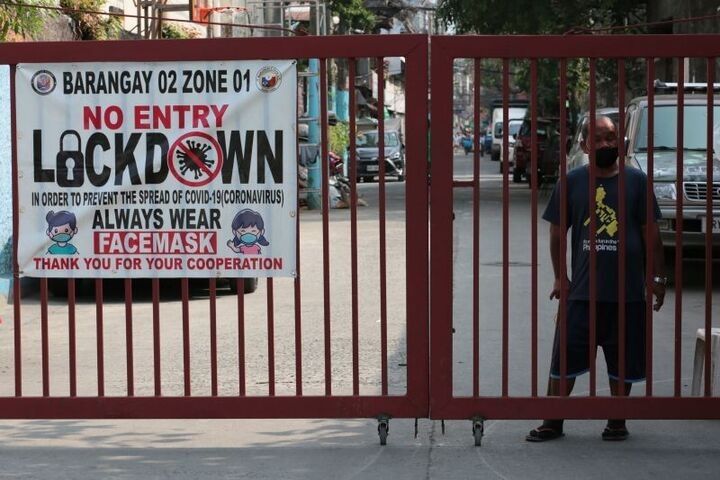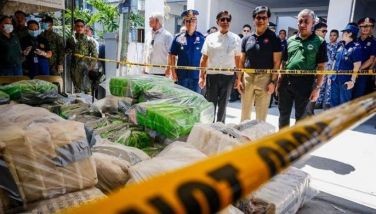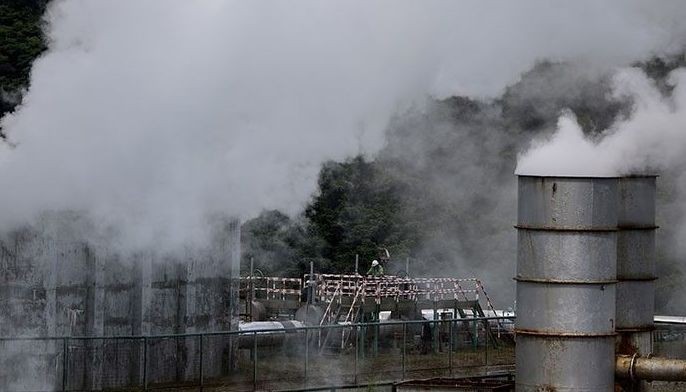Areas under granular lockdown rise to 853

MANILA, Philippines — Areas under granular lockdown due to rising COVID cases have climbed to 853, an increase of 53 percent in one day, the Philippine National Police (PNP) reported yesterday.
PNP data showed 853 areas nationwide under granular lockdown, affecting 1,072 households or 2,289 families. The figure is 53.41 percent higher compared to 556 areas under lockdown on Thursday.
The region with the most number of locked down areas is the Cordillera Administrative Region (CAR) with 338, followed by Ilocos (316) and Cagayan Valley (137). Mimaropa and Zamboanga peninsula, meanwhile, have 29 and 16, respectively.
In Metro Manila, there are only 17 areas under lockdown, about 65.3 percent lower compared to 49 in the previous day. In total, there are 56 households or 86 people in NCR who were prevented from going outside their homes during the lockdown.
From 900 calls daily during the peak of the COVID surge, average calls received by the government’s referral hotline decreased to 500 to 700 per day, according to One Hospital Command Center medical officer Marylaine Padlan.
Padlan noted that most of the calls still come from the National Capital Region (NCR) and its adjacent regions of Central Luzon and Calabarzon.
However, calls received per day had increased in other regions, particularly in Ilocos, Eastern Visayas and Davao.
Padlan added that in NCR, the utilization rate of hospitals is at “low risk” at 42 as of Jan 27. Central Luzon and Calabarzon are also both at low risk while Caraga remains at high risk while the rest of the regions are at moderate risk.
Scrapped
Presidential adviser for entrepreneurship and Go Negosyo founder Joey Concepcion yesterday said that alert levels would eventually have to be scrapped, particularly for the NCR, as lockdowns will be more granular and as people who get sick stay at home.
“My recommendation is there is no need for alert levels anymore at a certain point, except maybe for the Visayas and Mindanao, which are only taking their vaccines now… They were the last to take it. So, we give time. But NCR, it can graduate out of alert levels. I don’t think there is a need. Self-quarantine is going to be the mode,” he said.
He said that if you look at the situation earlier this month, NCR did not need to go to Alert Level 4 even when COVID-19 cases were high.
He said the next move is to push for a shift to Alert Level 2 for NCR by mid-February as COVID-19 cases are expected to go down.
Metro Manila is under Alert Level 3 until the end of this month.
Overwhelmed
Contact tracers could no longer perform their tasks properly as they are overwhelmed with a surge in COVID-19 cases fueled by the Omicron variant, contact tracing czar and Baguio City Mayor Benjamin Magalong said yesterday.
“The contact tracers are really overwhelmed,” Magalong said in Filipino, adding that during the onset of the pandemic in 2020, three to four contact tracers were working on one case. However, the ratio has ballooned to one contact tracer for 30 to 40 patients since the Omicron variant hit.
With the lack of manpower, Magalong said contact tracers are forced to concentrate on the first level generation contacts of COVID-19 cases and ignore the other generation levels.
“Go for the first level generation and just maximize your activities for that day. Concentrate on case management,” Magalong said.
Adding to the woes of local government units (LGUs) is the decision of the Department of the Interior and Local Government (DILG) not to rehire about 16,000 contact tracers due to lack of funds.
Proper ventilation
Having proper ventilation in homes, workplaces and other establishment should be part of the ‘new normal’ in this pandemic, the Department of Health (DOH) said yesterday.
DOH Undersecretary Maria Rosario Vergeire said having proper ventilation in homes, workplaces and other establishments is “highly recommended to allow the circulation of clean air indoors, which helps further prevent the spread of the virus.”
The DOH emphasized proper ventilation can be achieved by always keeping windows or doors open for fresh air to flow or putting an electric fan in front of a window for good air circulation. If the weather is too hot to keep windows open, open it for a few minutes every hour.
Vergeire also reminded the public that when meeting friends, colleagues or relatives, they should make sure the meeting is in a well-ventilated space.
“It is best to practice social distancing and the wearing of face masks at all times. If possible, limit interaction to an hour to limit transmissions and infections,” she added. – Sheila Crisostomo, Louella Desiderio
- Latest
- Trending






























